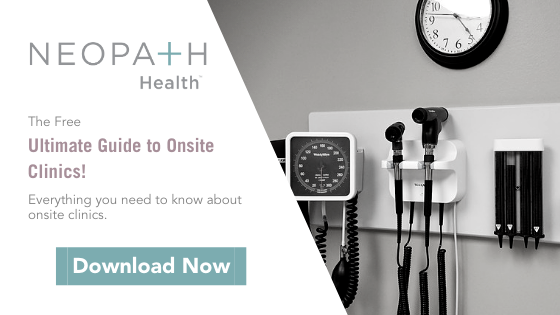According to 2018 research conducted by The Kaiser Family Foundation, employers contribute an average of $14,069 per year, per employee for family health insurance coverage. This has increased by a surprising 50% since 2010, when the average employer contribution to a family plan was $9,325.
So why are corporate healthcare costs rising? The answer is complex. A number of factors have contributed to rising healthcare costs, making it more and more challenging for organizations to offer competitive benefits. Let's discuss 4 reasons why there are a rise in corporate healthcare costs.
Aging Population
Factors like increased life expectancy from advances in medicine and decreased birth rates due to cultural shift have led Americans to live longer. The result? More US workers are over 55 years old than ever before. In fact, by 2024, the United States Census Bureau estimates that 25% of the total workforce will be over 55 and 33% of those workers will be over 65 years old.
Take control of your corporate healthcare costs. Learn how. Click here for the guide.
As you'd expect, healthcare costs tend to increase with age. One 2016 study found that average spend is $2,985 per year for those 18-44 years old. That spend doubles at 45, when average healthcare expenses rise to $6,406, and then nearly doubles again at 65, when expenses skyrocket to $11,316 per year. While health insurance helps cover these costs for the worker, premiums are based on spend. That means employers cover the cost in the end.
Increasing Demand for Government-Sponsored Healthcare
The aging population has led to an increased demand for Medicare, while the Medicaid expansion has resulted in increased eligibility for Medicaid. How does all of this impact the employer? Healthcare providers receive pennies on the dollar for the services they provide to patients covered by Medicare and Medicaid. A larger population of Medicare and Medicaid patients, then, reduces the amount collected for every dollar charged. This drives these organizations to charge more for services in order to generate revenue needed to continue operating.
Prevalence of Chronic Illness
Related to (but not totally explained by) the aging population is an increased prevalence of chronic illnesses. Prevalence and costs associated with the following ailments have all increased exponentially in the last decade: diabetes, low back pain, neck pain, high blood pressure, high cholesterol, depression, falls, urinary disease, osteoarthritis, sepsis, and oral disease. Again, insurance companies use their spend from the prior year to determine premium costs for the new year, which means that all of these chronic illnesses contribute to astronomical healthcare costs for employers. (Learn more about why healthy employees costs less by clicking here.)
Two of the primary driving factors for increased chronic illness and associated expenses are limited access to care and unhealthy lifestyles. Workers who don't seek out preventive intervention through annual physicals or don't see their doctor early when they suspect something is wrong contribute to rising costs. At the same time, leaving work for an appointment can result in lost time, lost productivity, and lost pay, especially when having to travel across town and check in 30 minutes prior to their appointment time. This is the tip of the iceberg; high deductibles and health anxiety are other reasons workers don't seek prevention and treatment as well.

Another factor driving the increased prevalence of chronic illness is the unhealthy lifestyle of the Standard American Diet. As more and more households require two incomes in order to make ends meet, cooking from scratch and prioritizing self-care is more difficult than ever before. Instead, it's often easier to grab fast food for dinner or something from the vending machine for breakfast. Over time, these small choices lead to big risks: malnutrition, obesity, and chronic illness.
Government Policy
Finally, another reason why corporate healthcare costs are rising is the connection between the cost of healthcare and government policy throughout American history. Starting around 1965, health insurance expanded giving more consumers access to expensive long-term care options and emergency services, increasing healthcare expenditures.
Next, Medicare and Medicaid expanded in the sixties and seventies, leading to an increase in demand for services and subsequently, an increase in prices. Reliance on emergency and inpatient care increased, and because organizations collect pennies on the dollar for services charged to Medicare and Medicaid, healthcare providers continued to increase their prices.
Wage-price controls implemented by Nixon in 1971 helped with inflation, but when those controls expired in 1974 prices rebounded again. Additionally, the home health industry boomed, increasing options for care and the costs associated with that care. Further increasing the demand for care was the Emergency Medical Treatment and Labor Act of 1986, which required hospitals to treat patients who sought care in their emergency rooms whether they were able to pay or not. Around the same time, Congress passed legislation allowing pharmaceutical companies to advertise on television, increasing the cost of prescription drugs.
The saga continued until 2010, when the Affordable Care Act aimed to reduce costs for consumers. The benefit didn't extend to employers, though, and in fact, many employers experienced an increase in healthcare expenses.
So what can employers do to combat rising healthcare costs?
In addition to offering wellness programs at work, forward-facing employers are implementing onsite clinics. Onsite clinics promote prevention and early intervention, reducing overall healthcare costs for both the employee and the employer. Employers who offer onsite clinics reap the benefits: better employee attendance, higher productivity, reduced healthcare costs, improved engagement, and recruitment and retention incentives.
In order to achieve these benefits, some 10% of large employers have implemented an onsite clinic. Third-party partners like NeoPath Health make it easy by evaluating feasibility, helping you plan and budget, and manage your clinic in every aspect from recruiting staff to clinic operations. This allows you to be the expert in your field without having to learn how to run a clinic. Continual learning about others ways you can control your rising corporate healthcare costs here.
Sources
http://files.kff.org/attachment/Summary-of-Findings-Employer-Health-Benefits-2018
https://www.registerednursing.org/healthcare-costs-by-age/
https://www.investopedia.com/insurance/why-do-healthcare-costs-keep-rising/
https://www.thebalance.com/causes-of-rising-healthcare-costs-4064878
.png?width=433&name=NeoPath_2019_logo_2color%20(1).png)




